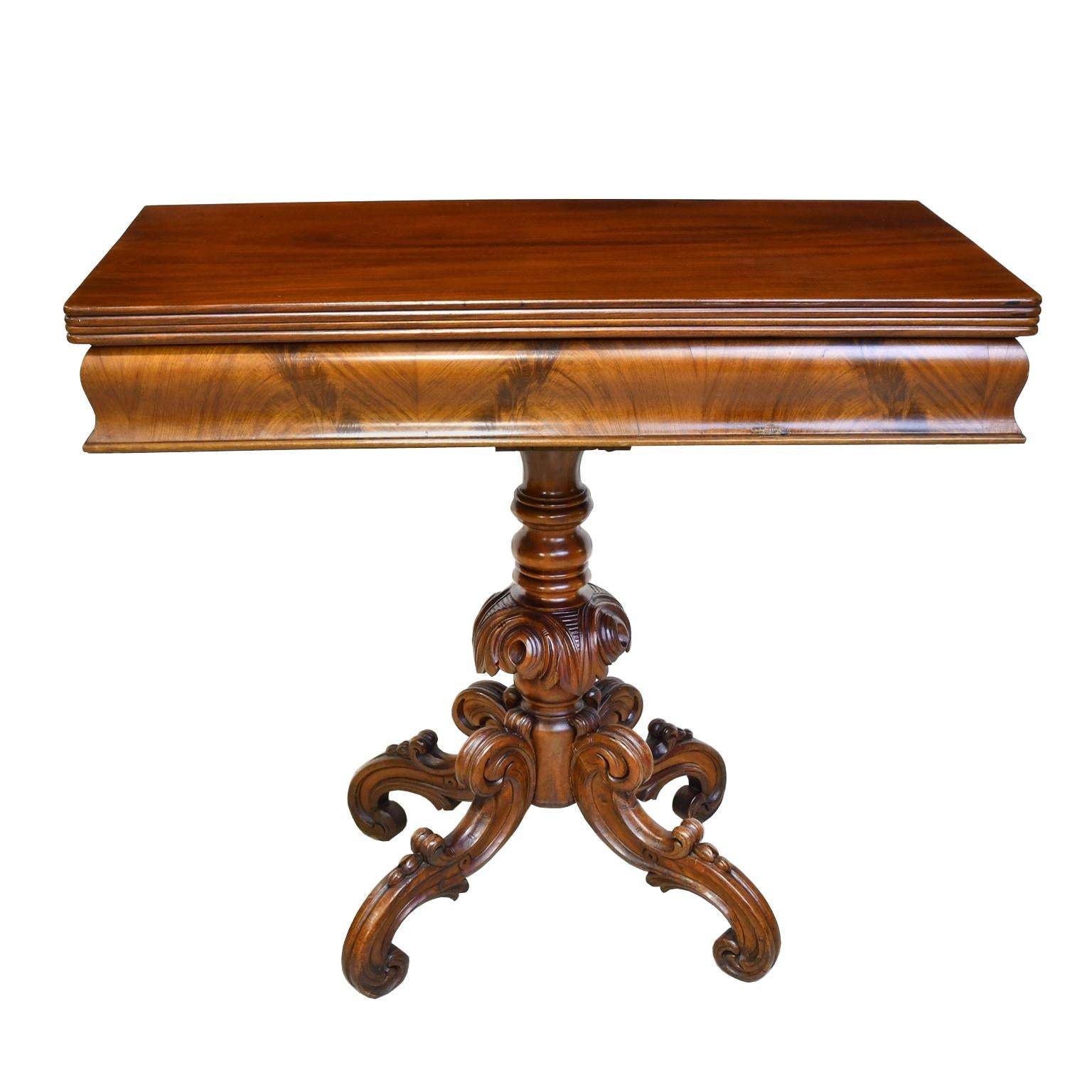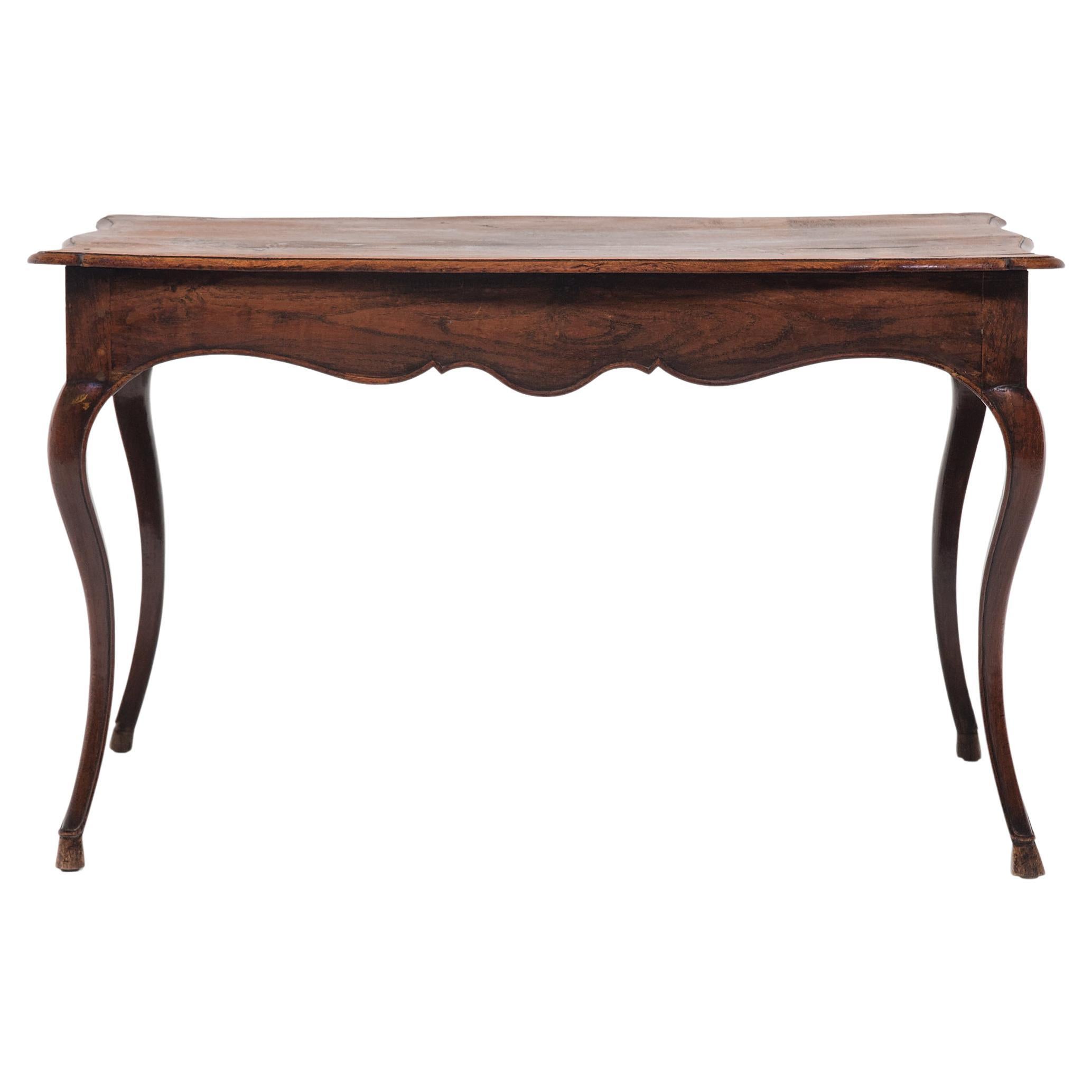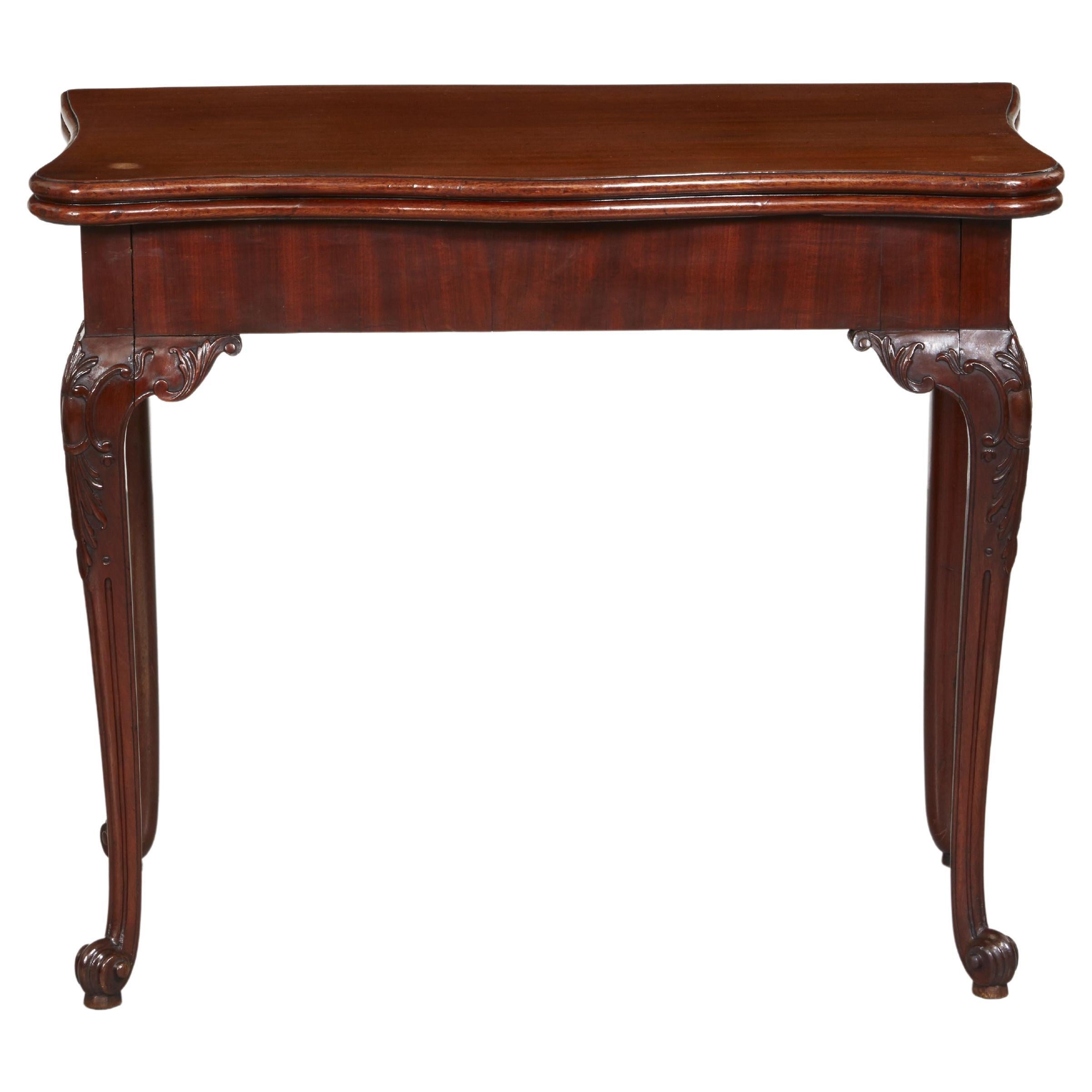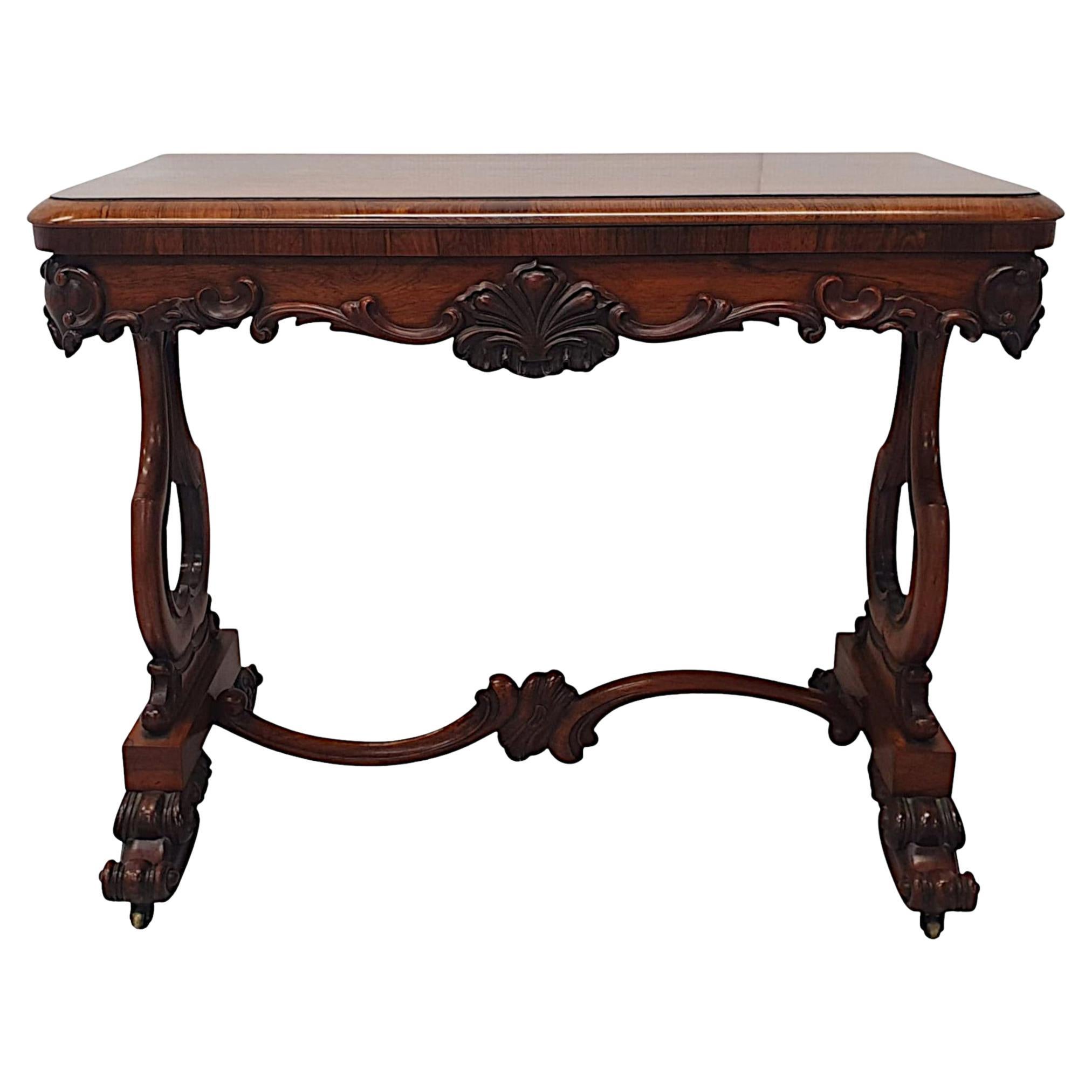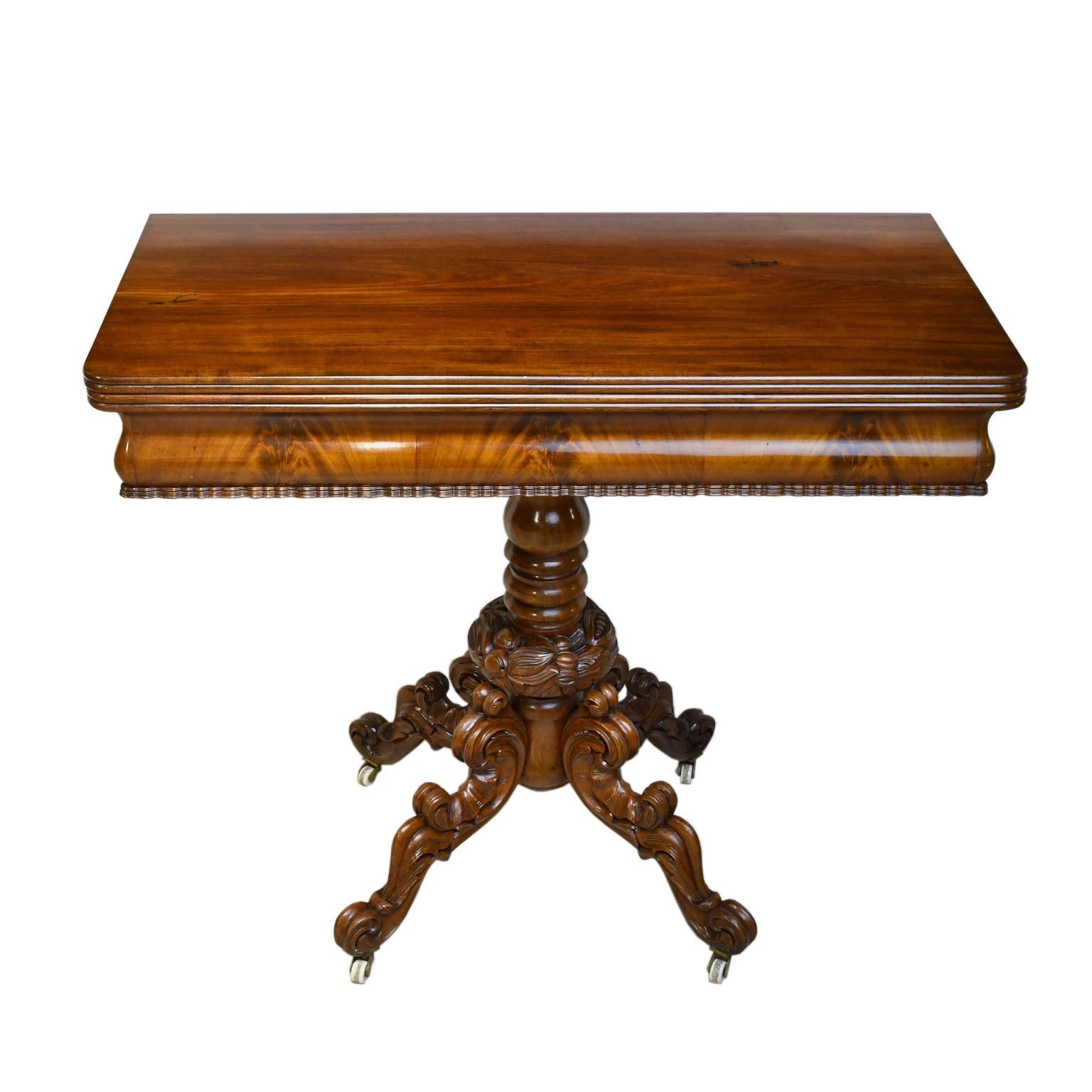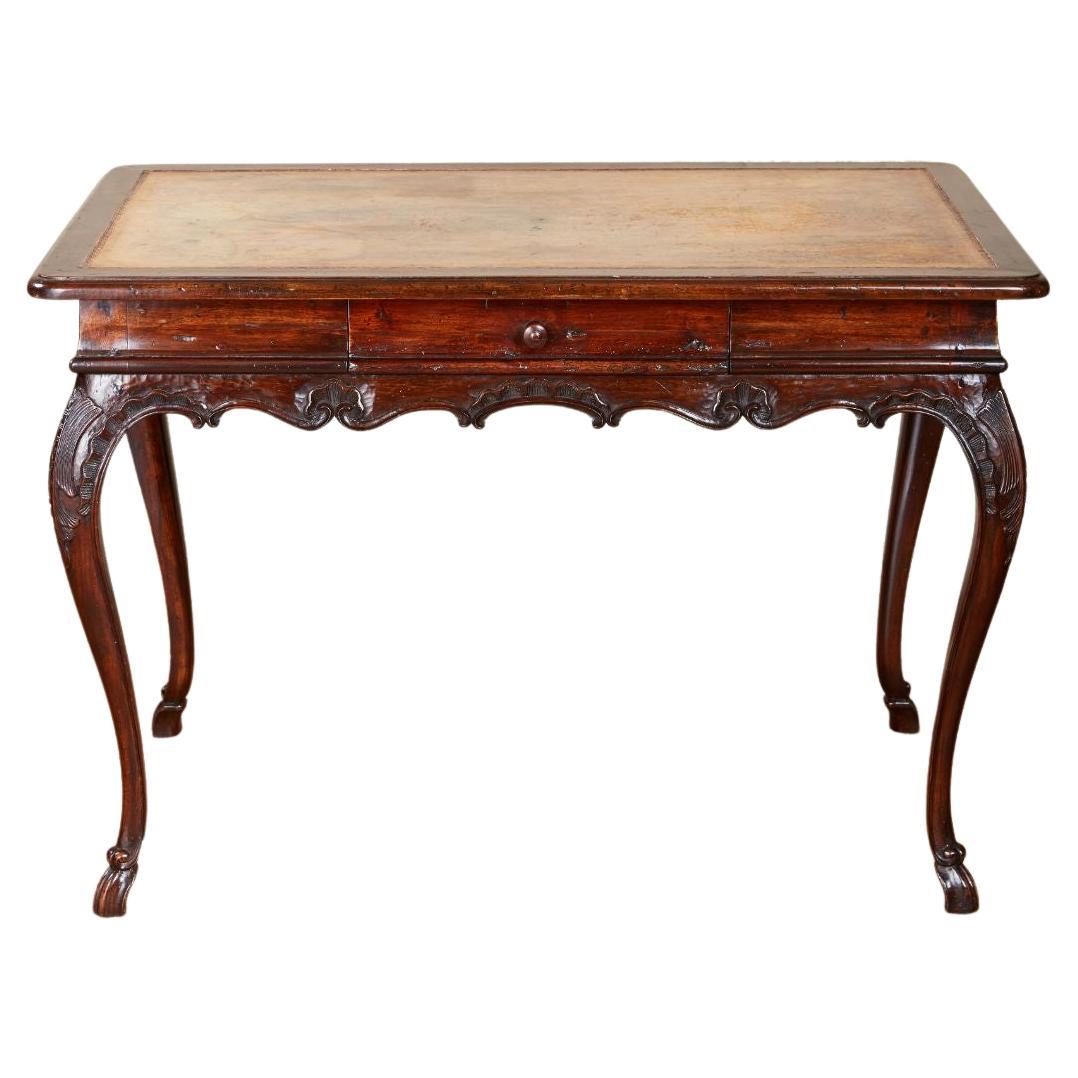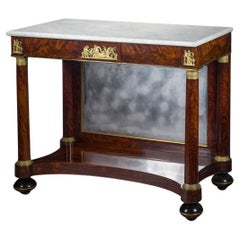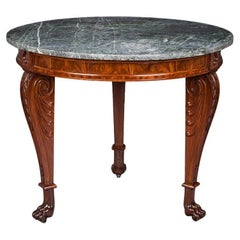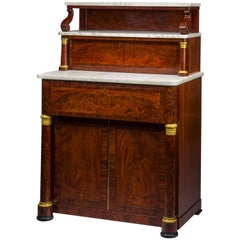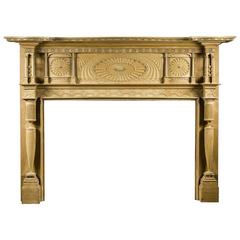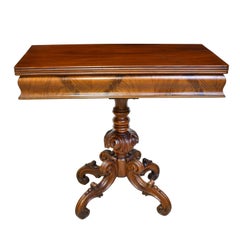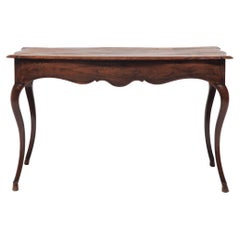Items Similar to Card Table in the Rococo Taste
Want more images or videos?
Request additional images or videos from the seller
1 of 6
Card Table in the Rococo Taste
$9,500
£7,396.20
€8,410.69
CA$13,658.30
A$14,999.46
CHF 7,833
MX$179,024.79
NOK 99,236.60
SEK 92,492.42
DKK 62,816.88
About the Item
RECORDED: cf. Anna Tobin D’Ambrosio, ed., Masterpieces of American Furniture from the Munson-Williams-Proctor Institute (Syracuse University Press, Utica, New York, 1999), pp. 85, 86, 87 illus. the Munson-Williams-Proctor tables // cf. The Metropolitan Museum of Art, New York, 19th Century America–Furniture and Other Decorative Arts (1970), exhib. cat., [n.p.] no.133
This table is identical to a pair of card tables bearing the stenciled label of Charles A. Baudouine of 335 Broadway, New York, which were acquired by James and Helen Munson Williams of Utica, New York, in May 1852 for their home, Fountain Elms, which is where they remain today as part of the Munson-Williams-Proctor Art Institute collection. The Williams tables were billed as “1 Rosewood Multiform Table” at $160 for the pair, and they were indeed “multiform” in that they could be used separately and folded as a pair of console tables, opened as a pair of card tables, or joined together as a center table. The present table varies essentially in the fact that it does not include the mechanism that would have allowed it to be attached to another to form a center table.
Of French descent, Baudouine was born in New York in 1808. He made his debut as a cabinetmaker in the New York directory of 1829/30, where he is listed at 508 Pearl Street. By 1839/40 he relocated to Broadway, where he remained in business at various addresses until about 1854. A sense of the scale of Baudouine’s operation is given by German immigrant cabinetmaker Ernest Hagen, who worked for him after 1853, and, historian as he was, noted that Baudouine employed about seventy cabinetmakers, and, with “carvers, varnishers, and upholsterers nearly 200 hands all told.”
- Creator:Charles A. Baudoine (Designer)
- Dimensions:Height: 29.25 in (74.3 cm)Width: 45.75 in (116.21 cm)Depth: 15.75 in (40.01 cm)
- Style:Rococo Revival (Of the Period)
- Materials and Techniques:
- Place of Origin:
- Period:
- Date of Manufacture:circa 1850
- Condition:Refinished. Replacements made: Baize (felt playing surface) has been replaced. Wear consistent with age and use. CONDITION: Very fine. Cleaned and French polished. Replaced red velvet playing surface.
- Seller Location:New York, NY
- Reference Number:Seller: FAPG 74801stDibs: LU903228782052
About the Seller
No Reviews Yet
Recognized Seller
These prestigious sellers are industry leaders and represent the highest echelon for item quality and design.
Established in 1952
1stDibs seller since 2010
Associations
Art Dealers Association of America
- ShippingRetrieving quote...Shipping from: New York, NY
- Return Policy
More From This Seller
View AllPier Table
Located in New York, NY
One of the signature forms of the Neo-Classical period, the pier (or console) table received its name from its typical use against the wall, or pier, between two windows. Pier tables...
Category
Antique 1810s American Neoclassical Tables
Materials
Marble, Brass, Bronze, Lead
$65,000
Center Table with Scroll Legs, Paw Feet and Marble Tops
By Thomas Seymour
Located in New York, NY
Center Table, about 1818–20
Attributed to Thomas Seymour (1771–1848), working either for James Barker or for Isaac Vose & Son, with Thomas Wightman (1759...
Category
Antique 1810s American American Classical Center Tables
Materials
Wood, Mahogany
Butler's Desk and Etagére, New York, Possibly Duncan Phyfe
By Duncan Phyfe
Located in New York, NY
Butler’s Desk and Etagére, circa 1825
New York, possibly by Duncan Phyfe
Mahogany (secondary woods: mahogany, pine, poplar), with ormolu mounts, marble,...
Category
Antique 1820s American Neoclassical Cabinets
Materials
Mahogany
Fan-Carved Wood Mantel in the Federal Taste
Located in New York, NY
New York,
Fan-carved mantel in the Federal taste, circa 1812
Pine
Measures: 66 1/4 in. high, 90 3/8 in. wide, 13 1/4 in. deep
Within the genre of carved rather than plasterwork mantels of the Federal Period, no example that has come to light is more perfectly designed or more carefully wrought than the present one, which is an amazing symphony of fans, urns, beads, and other Neo-Classical devices, all ultimately influenced by the plasterwork designs of the English architects Robert (1728–1792) and James (1732–1794) Adam.
Of a type that proliferated in the area bounded by the northern New Jersey counties of Bergen and Passaic, the Hudson Valley, and western Long Island, the mantel is representative of work that flourished in the first couple of decades of the 19th century. While most of the woodwork of this style that has survived is found in interiors, various examples of exterior doors and other trim have been noted, but most examples have disappeared as a result, variously, of natural deterioration and purposeful demolition in anticipation of development.
Although considerably larger in scale and more elaborate in ornament than a mantel that has been in the collection of the Brooklyn Museum since 1944 (acc. no. 44.55; photograph in Hirschl & Adler archives), the present mantel is so close in style and conception to that example that it likely originated in the same house.
The Brooklyn mantel is documented as having been removed from a house built by Judge Isaac Terhune (1762–1837), an eminent lawyer and judge. The house was situated on King’s Highway, at the corner of Mansfield Place, at the edge of South Greenfield, a village in northern Gravesend, Brooklyn. A photograph of the house, taken by the German e´migre´ photographer, Eugene Armbruster (1865–1933), is in the collection of the New-York Historical Society.
Terhune is ultimately descended from the Dutch-Huguenot e´migre´ Albert Albertson Terhunen, who died in Flatlands, Brooklyn, in 1685.The family eventually spread out through New Amsterdam, Long Island, and Bergen County, New Jersey. Terhune’s great-grandson, also Albert (1715–1806), left a sizable estate to his six surviving children, including his second child and second son, Isaac.
Judge Terhune lived in the house until his death in 1837, at which time, according to an article in The New York Times for November 27, 1910, he, having died without issue, “left the White Frame Mansion with its exquisitely carved doorway, beautiful mantels, and other interior adornments to his brother John” (Part Six, p. 11).
The article continues:
After the latter’s death, the house and its estate of about 70 acres passed through several owners, eventually being purchased in 1853 by Benjamin G. Hitchings [1813–1893].
The house next passed to Benjamin’s son, Hector, who had been born in the house, and then lived there for 25 years. He sold it in 1910 in partial payment for a Manhattan apartment house. After thus having been sold to a real estate developer, the Hitchings property was subdivided into Hitchings Homestead. The house survived until about 1928, at which time it was razed and a Deco-style apartment house with the address 2301 Kings Highway was constructed on the site and occupied in 1935.
By 1910, the fate of the house, in an area of Brooklyn that was being rapidly developed, was becoming obvious. The Times article reported:
The house has been well kept up, but fearing lest the hand of time or vandals might deal harshly with some of its choice bits of carving, Mr. Hitchings removed a few years ago a few beautifully carved wood mantels...
Category
Antique 1810s American Neoclassical Fireplaces and Mantels
Materials
Wood
Small Settee in the Neoclassical Taste
Located in New York, NY
Small Settee in the neoclassical taste
Boston, Massachusetts (active 1804–17), about 1810
Mahogany (secondary woods: ash)
Measures: 35 1/8 in. high, 59 3/4 in. long, 19 1/8 in. deep
Although the diminutive scale of this settee places it in a unique category, the piece itself partakes of a vocabulary that is common in Boston furniture of the Late Federal period. Its sabre legs, for example, as seen straight on from the left and right ends, are closely related to the legs, as seen from the front, on a group of chairs of undisputed Boston origin, including a spectacular armchair with scrolled arms (see Stuart P. Feld, Boston in the Age of Neo-Classicism, 1810–1840, exhib. cat. [New York: Hirschl & Adler Galleries, 1999], p. 37 no. 6 illus. in color), as well as a number of side chairs, including a set made for Nathan Appleton (see Page Talbott, “Boston Empire Furniture, Part I,” The Magazine Antiques, CVII [May 1975], p. 887 fig. 12). In all, the legs are ornamented with two bold, somewhat flattened reeds set between corner beads, a pattern which is repeated here on the front and end seat rails as well. The superb quality of the piece is further demonstrated in the finely drawn profile of the arms, as well as the delicately bulbous surface of the fronts of the arms and legs. As in the best of the related chairs, the sabre legs end in delicately carved paw feet. The added refinement of the beautifully carved rosettes at both the fronts and backs of the arms suggests that the piece may have been designed to be used in the round.
Stylistically harmonious with these pieces is also a group of larger sofas with frontally set sabre legs and scrolled arms (see Page Talbott, “Seating Furniture in Boston, 1810–1835,” The Magazine Antiques, CXXXIX [May 1991], p. 963 pl. 11) that represent an indigenously Boston form. Although none of the furniture in this group has been effectively attributed, they can certainly be related to various Boston card tables...
Category
Antique Early 19th Century American Neoclassical Settees
Materials
Wood
Pair Side Chairs with Lyre Back
Located in New York, NY
“I know of no other chair like the single [sic] ‘lyre back’ one. . . . I certainly recognize it as a Boston chair considering all the individual elements, but the combination is particularly elegant.” So wrote noted scholar of Boston furniture Page Talbott when a set of four chairs of this design originally surfaced in the 1980s. Although the existence of four chairs in a specific pattern might imply that the chairs were originally part of a larger set, no additional chairs of this form have appeared in the intervening years.
The lyre became a popular motif during the Neo-Classical period, and is frequently encountered as the back splat of klismos chairs, in no example more familiar than in a group of Duncan Phyfe chairs...
Category
Antique 1820s American Neoclassical Chairs
Materials
Mahogany
$30,000 / set
You May Also Like
Rococo-Revival Scandinavian Game Table, circa 1850
Located in INTERLAKEN, NY
A very lovely game table in the Rococo style in mahogany. Rectangular top rests on a solid mahogany pedestal base with turned & carved acanthus post that ends in four carved "S" scro...
Category
Antique Mid-19th Century Scandinavian Rococo Revival Card Tables and Tea...
Materials
Mahogany, Pine
French Louis XV-Style Tea Table with Cabriole Legs, c. 1900
Located in Chicago, IL
Crafted in France in the late 19th century, this refined Louis XV-style side table boasts a timeless, lightweight design defined by delicate cabriole legs ending in square hoof feet....
Category
Antique Late 19th Century French Louis XV Center Tables
Materials
Oak
Very Fine George III Card Table
By Paul Saunders
Located in Greenwich, CT
Very fine Georgian mahogany card table possibly by Paul Saunders, with shaped and molded serpentine top with baize lined interior and concertina action, ...
Category
Antique 1760s English Chippendale Card Tables and Tea Tables
Materials
Mahogany, Oak
Rare and Unusual Early 19th Century Turn over Leaf Card Table
Located in Dublin, IE
A rare and unusual early 19th century richly patinated fruitwood turn over leaf card table in lovely original condition, finely hand carved with stunning detail throughout. The mould...
Category
Antique Early 19th Century English Card Tables and Tea Tables
Materials
Brass
Scandinavian Rococo Revival Game Table, circa 1850
Located in INTERLAKEN, NY
Rococo-revival game table in Cuban mahogany with beautifully-articulated pedestal base, backgammon felt-lined inner playing surface and two round surfa...
Category
Antique 19th Century Scandinavian Rococo Revival Game Tables
Materials
Mahogany
$3,868 Sale Price
34% Off
Italian Rococo Writing Table
By Guiseppe Biondo
Located in Greenwich, CT
Fine Italian walnut rococo writing table, the lovely faded olive inset leather top with gilt tooled edge and thumb molded walnut banding over molded frieze with single drawer, the ap...
Category
Antique 1780s Italian Rococo Desks and Writing Tables
Materials
Leather, Poplar, Walnut
More Ways To Browse
Mid Century Rosewood Console Table
American Masterpiece
Open Consoles
Folding Console Table
Stenciled Table
American Tea Table
Ernest Hagen
Mahogany Folding Card Table
Pedestal Tea Table
American Tea Table
Irish Tea Table
Round Tea Table
Antique Mahogany Folding Tea Table
George Ii Tea Table
18th Century Folding Table
Queen Anne Tea Table
Tilt Top Card Table
Irish Mahogany Tea Table
